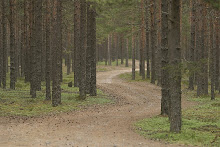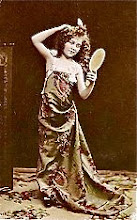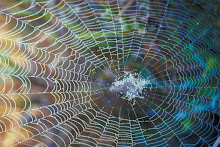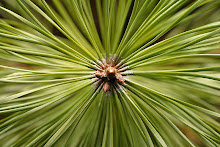Monday, June 28, 2010
Questions to Consider, Violence Against Women
Once again the local headlines tell of another young woman murdered by her ex-husband. He came for her with a 12 gauge shotgun after saying he was "going to put a hole in her" when he heard she had dated another man since their separation. He killed her while her 14 year old daughter was in the home. Her mother had tried to protect her by telling her to stay in her room when she saw him breaking into the home.
How common these tragic stories have become, women murdered by their husbands, ex-husbands and boyfriends. How little value our culture places on women. Why are we subjected to story after story of this violence against women in our entertainment: films, television, music? How many television shows present women being tortured, raped and murdered every day? Even some of the best, most applauded, shows on the networks routinely have themes of violence against women, and often it isn't just one character being killed but multiple women per show night after night. Why is this considered entertainment in this country? Why do we accept this? Then there is reality, the television news shows parading one murder case after another every night. And most often although feigning innocence, false grief and pleading for assistance to find "the REAL killer", it proves to be the one who professed to love her and vowed to protect her who decides her life should end. What will it take for this outrage to end?
Thursday, June 24, 2010
Asking for Roses by Robert Frost
A house that lacks, seemingly, mistress and master,
With doors that none but the wind ever closes,
Its floor all littered with glass and with plaster;
It stands in a garden of old-fashioned roses.
I pass by that way in the gloaming with Mary;
'I wonder,' I say, 'who the owner of those is.'
'Oh, no one you know,' she answers me airy,
'But one we must ask if we want any roses.'
So we must join hands in the dew coming coldly
There in the hush of the wood that reposes,
And turn and go up to the open door boldly,
And knock to the echoes as beggars for roses.
'Pray, are you within there, Mistress Who-were-you?'
'Tis Mary that speaks and our errand discloses.
'Pray, are you within there? Bestir you, bestir you!
'Tis summer again; there's two come for roses.
'A word with you, that of the singer recalling--
Old Herrick: a saying that every maid knows is
A flower unplucked is but left to the falling,
And nothing is gained by not gathering roses.'
We do not loosen our hands' intertwining
(Not caring so very much what she supposes),
There when she comes on us mistily shining
And grants us by silence the boon of her roses.
With doors that none but the wind ever closes,
Its floor all littered with glass and with plaster;
It stands in a garden of old-fashioned roses.
I pass by that way in the gloaming with Mary;
'I wonder,' I say, 'who the owner of those is.'
'Oh, no one you know,' she answers me airy,
'But one we must ask if we want any roses.'
So we must join hands in the dew coming coldly
There in the hush of the wood that reposes,
And turn and go up to the open door boldly,
And knock to the echoes as beggars for roses.
'Pray, are you within there, Mistress Who-were-you?'
'Tis Mary that speaks and our errand discloses.
'Pray, are you within there? Bestir you, bestir you!
'Tis summer again; there's two come for roses.
'A word with you, that of the singer recalling--
Old Herrick: a saying that every maid knows is
A flower unplucked is but left to the falling,
And nothing is gained by not gathering roses.'
We do not loosen our hands' intertwining
(Not caring so very much what she supposes),
There when she comes on us mistily shining
And grants us by silence the boon of her roses.
Monday, June 21, 2010
The Ponds by Mary Oliver
Every year
the lilies
are so perfect
I can hardly believe
their lapped light crowding
the black,
mid-summer ponds.
Nobody could count all of them --
the muskrats swimming
among the pads and the grasses
can reach out
their muscular arms and touch
only so many, they are that
rife and wild.
But what in this world
is perfect?
I bend closer and see
how this one is clearly lopsided --
and that one wears an orange blight --
and this one is a glossy cheek
half nibbled away --
and that one is a slumped purse
full of its own
unstoppable decay.
Still, what I want in my life
is to be willing
to be dazzled --
to cast aside the weight of facts
and maybe even
to float a little
above this difficult world.
I want to believe I am looking
into the white fire of a great mystery.
I want to believe that the imperfections are nothing --
that the light is everything -- that it is more than the sum
of each flawed blossom rising and fading. And I do.
the lilies
are so perfect
I can hardly believe
their lapped light crowding
the black,
mid-summer ponds.
Nobody could count all of them --
the muskrats swimming
among the pads and the grasses
can reach out
their muscular arms and touch
only so many, they are that
rife and wild.
But what in this world
is perfect?
I bend closer and see
how this one is clearly lopsided --
and that one wears an orange blight --
and this one is a glossy cheek
half nibbled away --
and that one is a slumped purse
full of its own
unstoppable decay.
Still, what I want in my life
is to be willing
to be dazzled --
to cast aside the weight of facts
and maybe even
to float a little
above this difficult world.
I want to believe I am looking
into the white fire of a great mystery.
I want to believe that the imperfections are nothing --
that the light is everything -- that it is more than the sum
of each flawed blossom rising and fading. And I do.
Friday, June 18, 2010
Summer's Come!
What is one to say about June, the time of perfect young summer, the fulfillment of the promise of the earlier months, and with as yet no sign to remind one that its fresh young beauty will ever fade. ~Gertrude Jekyll
Wednesday, June 16, 2010
Little Summer Poem Touching The Subject of Faith by Mary Oliver
Every summer
I listen and look
under the sun's brass and even
into the moonlight, but I can't hear
anything, I can't see anything --
not the pale roots digging down, nor the green
stalks muscling up,
nor the leaves
deepening their damp pleats,
nor the tassels making,
nor the shucks, nor the cobs.
And still,
every day,
the leafy fields
grow taller and thicker --
green gowns lofting up in the night,
showered with silk.
And so, every summer,
I fail as a witness, seeing nothing --
I am deaf too
to the tick of the leaves,
the tapping of downwardness from the banyan feet --
all of it
happening
beyond any seeable proof, or hearable hum.
And, therefore, let the immeasurable come.
Let the unknowable touch the buckle of my spine.
Let the wind turn in the trees,
and the mystery hidden in the dirt
swing through the air.
How could I look at anything in this world
and tremble, and grip my hands over my heart?
What should I fear?
One morning
in the leafy green ocean
the honeycomb of the corn's beautiful body
is sure to be there.
Monday, June 14, 2010
Claude Monet, His Water Lily Series
On arriving at Giverny in 1883, Monet saw the property as a blank canvas and quickly set about creating the garden he envisioned. He personally chose all the trees and plants himself and painstakingly
arranged them to create a beautiful, inspirational garden full of color, symmetry and perspective - everything he did on his canvases. In 1893 he bought the adjacent bit of land because it featured a pond which would inspire him with it's reflective surface in which he could further his study of the properties of light. To perfect his landscape he included - often difficult to find - water lilies on the surface of his pond. Then in 1895 he had his Japanese footbridge constructed over the lily pond and enlarged the pond in 1901. The water lilies increasingly became central in his work. The garden was flooded in 1910 about the same time as Monet's beloved wife Alice died and he ceased painting in the garden for a period.
Earlier in his career Monet had traveled a lot for his work searching out new vistas, but after marrying Alice and starting his garden, the artist preferred to stay at Giverny most of the time. The water lily garden grew as his relationship with Alice did and came to symbolize his love for her. In the first few years after Alice's death Monet produced only a few paintings, but in time he recovered. He continued with his water lily series but without his living inspiration the paintings used less and less realism, although I believe his failing eyesight had a lot to do with that too. Monet's Water Lily Series includes approximarely 250 oil paintings over the last 30 years of his life.
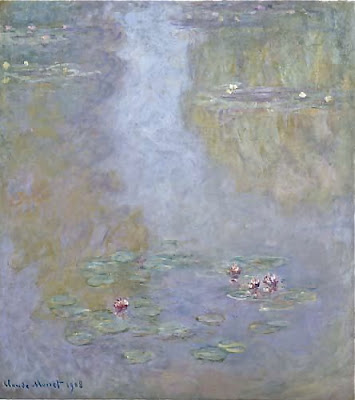_2.jpg)



Friday, June 11, 2010
Claude Monet: His Deteriorating Eyesight As Seen Through His Japanese Bridge Paintings
Because Monet always insisted he painted what he saw, it suggests his increasingly blurred effect of his brush strokes in later years was not so much that the Master's style was changing but rather that it was the result of his eyesight deteriorating. Those effects are most telling when looking at his many series paintings as they get closer to 1923 when he had his cataract surgery. Monet was a prolific letter write and he often wrote friends complaining of his failing eyesight and his inability to no longer tell his colors apart. At first his sight was too yellow producing muddier shades of browns, reds and yellows. After surgery his sight he said was too blue. Following are a number of his Japanese bridge paintings, of which he did many, that illustrate the effect of his failing eyesight on his famous works.
Monet destroyed much of the work he created while suffering with the cataracts. The few pieces that remain from that period were rescued by family and friends. After the surgery in the last few years of his life he returned to painting and completed his water lily series.
Monet destroyed much of the work he created while suffering with the cataracts. The few pieces that remain from that period were rescued by family and friends. After the surgery in the last few years of his life he returned to painting and completed his water lily series.
Sunday, June 6, 2010
Claude Monet, A Passion for Light and Color
Claude Monet was born November 14, 1840 in Paris. A few years later his family moved to Le Havre where his father was a merchant. He was a rebellious child with a talent for drawing caricatures. Early on he studied drawing under Jacques-Francois Ochard, a former student of Jacques-Louis David but soon met the artist Eugène Boudin who became Monet's mentor and taught him to use oil paints. Boudin also taught him the pleasures and benefits of "en plein air" (outdoors) painting. Always an encouraging supporter, his mother Louise Monet died in 1857 when Claude was 16 years old. He then went to live with his widowed childless aunt, Marie-Jeanne Lecadre. He entered the prestigious École des Beaux-Arts but soon rejected the school's traditional methods and techniques and left to attend Académie Suisse in Paris. There he formed friendships with fellow artists Camille Pissarro and Gustave Courbet. After a short time in the military he returned home to le Havre where he met and was influenced by artist Johan Barthold Jongkind. Soon Monet joined the studio of Swiss painter Charles Gleyre in Paris and met artists Pierre-Auguste Renoir, Alfred Sisley, and Frédéric Bazille with whom he formed the basis of the Impressionist movement. The Impressionists, or "insurgents" as they were called, rebelled against the hierarchy of the art world in Paris where it was dictated that painting should be a laborious process with a smooth result without a hint of brushstrokes and focusing on subjects from classical literature or history, so much so, that one needed a classical education to appreciate the work. This new art was painting directly from nature with the focus on the visual play of light on the scene. It was intimate and personal to each artist and involved unabashed brush strokes to simulate the reflection of the sunlight on nature. The rebellious Monet was recognized as the leader of the movement with his outspoken disdain for the artistic establishment in Paris. But it wasn't until a year later when Monet met the artist Edouard Manet that he found his greatest inspiration as an Impressionist. He spent this period perfecting his plein air painting and would not paint unless the sun light was reflecting in just the way he wanted.
Camille Monet became ill in 1876 but non-the-less produced their second son in 1878. She died September 5, 1879 of Tuberculosis at the age of 32. Monet had moved his family to Vétheuil in 1878 where Camille died. In 1883 Monet moved to Giverny, also on the Seine, forty miles from Paris. During this period, the grief stricken Monet created some of the best paintings of the 19th century. He was finally prospering and could afford to buy the house at Giverny in 1890. Monet took up gardening at Giverny, employing up to seven gardeners and would remain there for 43 years until his death. In 1892 he married his mistress Alice Hoschedé with whom he had begun an affair in 1876, three years before the death of his first wife. Alice died in 1911 and Monet was then cared for by her daughter and Monet's daughter-in-law, Blanche Monet. It was during this time that Monet's eyesight began to fail him as a result of cataracts involving both eyes.
The first effects of his cataracts can be seen in the paintings he made in Venice in 1908. as cataracts develop, whites become yellow, greens become yellow-green and reds, oranges, blues and purples are replaced by reds and yellows. Details fade and become blurry. Monet could continue painting by labeling his colors and his habit of always placing his colors in the same order on his palette. He was, however, used to painting just what he saw so gradually his paintings became composed mainly of reds and yellows, and his beloved blues vanished. In time he lost sight completely with his right eye and his left eye was losing it's acuity, so in the summer of 1922 he had to stop painting entirely. In 1923 he underwent surgery to remove his cataract from his right eye and he could see again wearing special green glasses. But his vision was still altered and he refused to have surgery on his left eye. The paintings done while his cataracts affected his vision have a more reddish tone which is characteristic of the vision of cataract sufferers. It is possible that after the surgery he may have been able to see ultraviolet wavelengths of light which are usually not associated with normal eyesight, so this may also have affected his color perception. He said after his surgery that he didn't see red or yellow anymore only blue. He still had the colors on his palette and he said he "remembered them very well." In spite of this hardship, Monet continued to paint up until 1926 shortly before he died at the age of 86 from lung cancer.
Monet is regarded as the quintessential Impressionist for his devotion to the ideals of the movement throughout his long, prolific career. He was a genius of the play of light and color and his understanding of such helped him to create some of the most important paintings in the history of art.
More to come on Monet in my next post.
For a collection of Monet's paintings go here -
http://www.claudemonetgallery.org/
Thursday, June 3, 2010
Egrets by Mary Oliver
Where the path closed
down and over,
through the scumbled leaves,
fallen branches,
through the knotted catbrier,
I kept going. Finally
I could not
save my arms
from thorns; soon
the mosquitoes
smelled me, hot
and wounded, and came
wheeling and whining.
And that's how I came
to the edge of the pond:
black and empty
except for a spindle
of bleached reeds
at the far shore
which, as I looked,
wrinkled suddenly
into three egrets - - -
a shower
of white fire!
Even half-asleep they had
such faith in the world
that had made them - - -
tilting through the water,
unruffled, sure,
by the laws
of their faith not logic,
they opened their wings
softly and stepped
over every dark thing.
Tuesday, June 1, 2010
Subscribe to:
Posts (Atom)























































